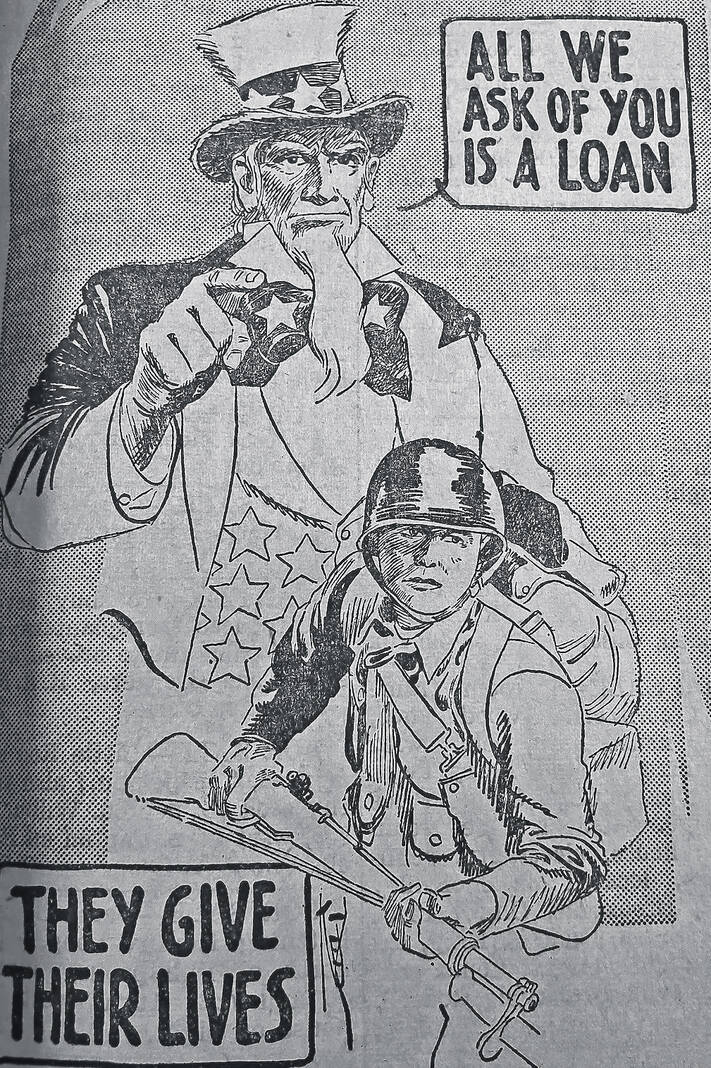
A newspaper advertisement in the Brookville Star seeking support for the World War II bond drive.
Submitted photo
BROOKVILLE — On April 12, 1943, the Treasury Department initiated an intensive three week program, the largest financing operation ever undertaken by any government. Thirteen billion dollars was the amount to be financed.
Seven types of Treasury securities were offered as follows: Treasury Bills; Treasury Tax Savings Notes, Series C; United States War Savings Bonds, Series E; United States War Savings Bonds, Series F; United States War Savings Bonds, Series G; 2 percent Treasury Bonds of 1950-52 and 2 ½ per cent Treasury Bills of 1964-1969.
Brookville areas bounded on the North by the Pleasant Plain Road, on the East by the Diamond Mill Road, on the South by the Little Richmond Road, and on the West by the Preble County Line Road could buy these bonds at the Brookville National Bank.
Personnel who could handle the sale of the bonds were Harry Ardery, Roger Hepner, J.L. Keener, Harry B. Smith, Robert Warnke, R.E. Brumbaugh, John Driver, B. F. Greenblat, Lewis Purnhagen, Victor Burkett, Allen Wysong, Frank Borden and D. C. Eby.
War costs money, and the $13 billion sought in the second war loan campaign, plus the current monthly bond purchases, taxes and other revenue would thus finance the war about three months. Those on the home front faced one of the most personal challenges of the war up to that date. That challenge was whether or not they were willing to sacrifice to a sufficient extent to lend the government, $13 billion within the next three weeks.
This was a job that had to be done. Those on the home front were feeling the pinch of war. They had gasoline rationing, food rationing, higher taxes and a lot of other discomforts. These were small in comparison to the agonies faced daily by the men that were fighting on the fronts of the world. Many of the local men were serving in this war and the citizens were asked to help the cause by buying the bonds.
In 1945, the Pennsylvania Railroad published figures relating that it took 24,483 freight cars to put war materiel aboard a big convoy. Some of the items listed were that it took 400 freight cars to transport 200 planes, 350 freight cars to transport 500 tanks, 330 freight cars to transport 500,000,000 rounds of ammunition, 12,500 freight cars to transport 75,000,000 gallons of gasoline. This gives a good idea of the enormous quantities carried by a big convoy on a crossing to one of the major war zones.
All information and the photo for this Look at Brookville article were supplied by the Brookville Historical Society. Do you have a photo or historical information to share or add? Please contact the Brookville Historical Society at 937-833-0285 or email to [email protected].

